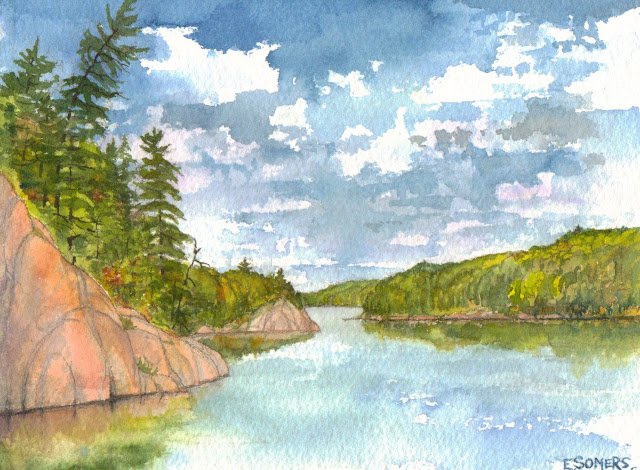When
I exhibited on a regular basis I worked hard at producing new paintings and
prints to exhibit and sell. It was seen as pushing it to attend an exhibition
without new paintings, or new prints. It could actually jeopardize your chance of
being invited back the following year. Art festivals, and the like, are held
with the sole purpose of the organizers making money. After all, there are
expenses involved, such as space rental and advertising, not all of which is
covered by fees paid by the exhibiting artists. As a consequence artists are
juried, accepted, into a show as much based upon the salability of their work
as its quality.
I
had little use for the so called limited edition print, or painting
reproduction, viewing it as nothing much more than a calendar of questionable
value. So, unlike many that I exhibited alongside I found myself working my
butt off to produce original, salable work. Hand colored, open edition,
etchings were my bread and butter. However, as few knew what an etching, or
original print was, I found myself producing small watercolour paintings.
Working this way, however, doesn’t satisfy the need to grow creatively, so from
time to time I’d challenge myself with a large, complicated, original print or
painting. A painting entitled, “Forest Floor”, was one such painting.
Late
autumn is my favorite time of the year. The trees stand naked, and the forest
floor is covered in fallen leaves. I’ve always been amazed regarding the
complex eco system that turns the fallen leaves into compost, food for new
growth, and one day while walking in the woods and looking down at my boots and
the fallen leaves, I hit upon an idea for a painting. I prepared a full sheet
of watercolour paper and drew an outline of my boots and began to paint. The
boots were easy, but what came next took much longer than I thought that it
would. You see, I’m a bit of a purest when it comes to watercolour refusing to
use white or black pigments, and tend to paint in a painstaking dry brush
method, or style. I’d foolishly thought
that I could finish the painting in a couple of weeks. Instead, at the end of
two weeks I had less than a third of the painting finished. Another exhibition
was on the horizon so the forest floor painting had to be set aside. Long story
short, as every leaf, or two, took almost a day to paint, it was almost two
years going back and forth before the painting was framed and ready for
exhibition.
“Forest
Floor” was a great experiment, or exercise. While painting there was quite a lot of
time for thought resulting in ideas for future paintings involving fallen
leaves, as well as the odd poem about my favorite time of the year.
Autumn
The
leaves fall silently
To
the forest floor
And swirl together
Like
long lost friends
Reunited.
In
the autumn of their time
Their
colors linger
Long
past prime
Waiting.
Comes
the frost that withers
And
they are buried
Beneath
the softly falling snow
In
silence.
In
the silence
They
join together
On
their final journey
Forever.
 |
 |
Eastern Chipmunk Watercolour Painting |
 |
Black-capped Chickadee Graphite Drawing |


















